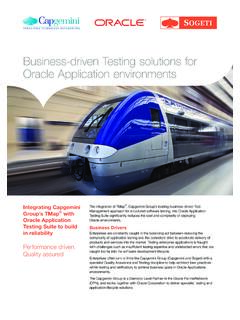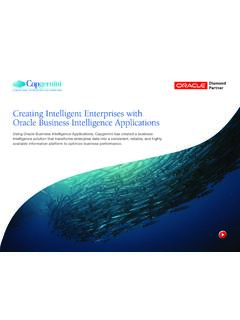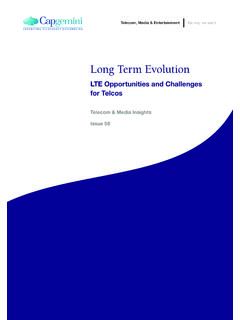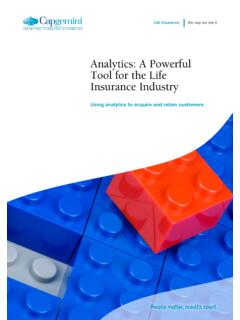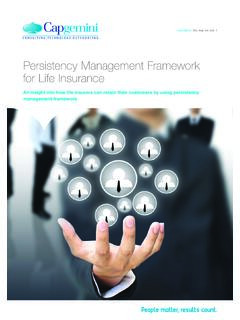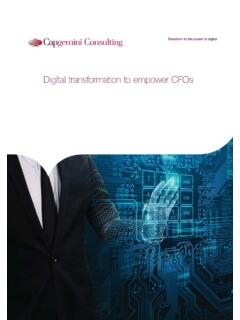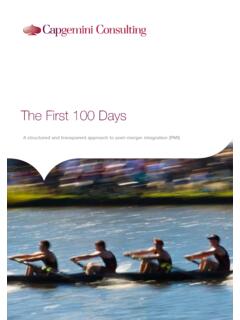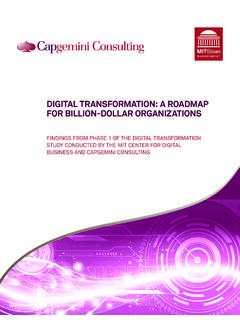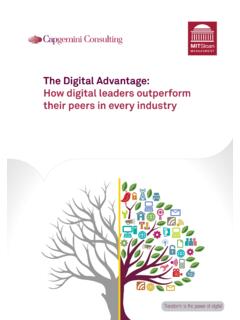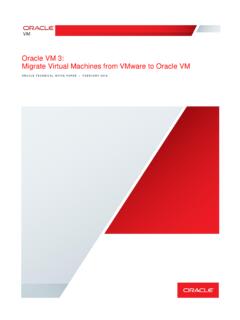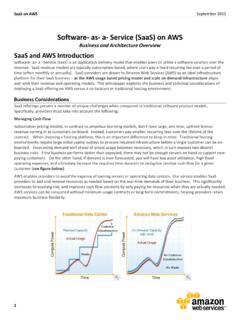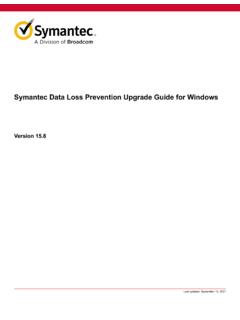Transcription of Core Banking Transformation: Measuring the Value
1 core Banking transformation : Measuring the ValueWith significant initial investments and long payback periods before generating substantial return, is it worth transforming your core Banking system?the way we see itBankingThe information contained in this document is proprietary. 2014 Capgemini. All rights reserved. Rightshore is a trademark belonging to of Contents1. Introduction 32. Drivers & Objectives Internal Drivers External Drivers transformation Objectives 53. Building a Business Case Cost Analysis Benefit Analysis Payback Period 94. The transformation Plan Approach Challenges Key Considerations for Success 135.
2 Conclusion 14 References 15 Table of ContentsCore Banking transformation refers to the replacement, upgrade, or outsourcing of a bank s core Banking systems which are an integrated suite of software applications for processing and posting of transactions and managing the accounting processes of settlement. These applications perform mission-critical operations for a bank related to accounts, loans, payments, and securities, and constitute the heart and backbone of the bank s information technology (IT) first core Banking systems appeared in the 1970s and were mainly developed in-house and ran on mainframes.
3 Package-based solutions started to appear in the 1980s but were limited in their ability to handle large volumes. In the 1990s, new players entered into this space with package offerings that were more open, flexible, and customer-centric. The core Banking solutions developed in the last decade have focused on convergence of digital channels along with increase in scalability and flexibility. These solutions focus on enhancing the mobility for the customer and internal bank staff, and on achieving real-time channel processing and multi-channel integration core Banking solutions of the future will be truly global so a bank can easily deploy a system across multiple geographies.
4 New core Banking solutions will be more scalable, adaptable, and process-centric than before and will be lean and fast to be economical to deploy over the cloud and enhance the banks agility in responding to competition and changing business IntroductionExhibit 1: Evolution of core Banking SystemsSource: Capgemini Analysis, 2013; core Banking Systems Survey , Capgemini, 20081970-80 core Banking systems were developed mainly during the 1960s and 70s, which provided basic functionalities for core Banking transactions1990-2000 New core Banking systems were developed, which were more open, flexible, and customer-centric Multi-channel processing/ integration Adoption of SOA and ASP1980-1990 Legacy core Banking systems were mainly product-centric and were developed in silos2010-2020 Focus on big data and analytics Focus on customer centricity, regulatory compliance.
5 And risk management Focus on mobility solutions2000-2010 Real-time processing across channels Multi-channel platform to facilitate multi- channel convergence Cloud-based platforms Tr uly global solution Scalable and adaptable Process-centric Lean and fast3the way we see Internal DriversCore Banking transformation is driven by the need for responding to internal business imperatives, such as growth and efficiency. Product and channel growth. There are an increasing number of products to cater to different customer segments. Furthermore, the number of channels is expanding with time, which is increasing the complexity of multi-channel Banking .
6 This has necessitated investments into modernizing core Banking systems in order to handle an increasing volume of product-channel transactions and payments. Legacy systems management. As legacy technologies are fast becoming obsolete, fewer resources are available with knowledge on legacy technologies and banks are forced to move to new technologies. The introduction of these new technologies provides banks with real-time systems, flexible business process set-up, and reduced platform costs through hosted and cloud-based solutions. Cost reduction. As banks look to improve internal IT efficiency in the current macroeconomic environment, they are turning to core Banking systems transformation as a way to gain more internal cost savings.
7 Today s core Banking systems are aimed at consolidating several stand-alone applications and optimizing existing costs associated with core applications and hardware processing which helps banks reduce the high maintenance costs associated with legacy IT External DriversCore Banking transformation is also driven by the need to respond to external business imperatives, such as regulations and competition. Regulatory compliance. Banks need to enhance their IT systems and operations in order to comply with an increasing array of new regulations such as Basel III, Foreign Account Tax Compliance Act (FATCA) and the Dodd-Frank Act which are aimed at enhancing risk management and governance procedures and improving transparency of Banking operations in customer interaction.
8 Customer centricity. Traditionally Banking has been product-centric but now products have become commoditized. Banking is now more customer-centric and there is a new focus on customer service, single view of the customer, and relationship-based pricing. Increasing competition. Banks are facing increasing competitive pressure from new entrants such as online and direct banks running on new core Banking platforms. This is forcing traditional banks running legacy core Banking applications to decide in favor of migrating their core Banking systems to new Drivers & ObjectivesThe introduction of new products, channels, and technologies has necessitated the transformation of old legacy Banking transformation : Measuring the transformation ObjectivesCore Banking transformation must have a proper business justification, such as decreasing operating cost, improving operating efficiency, and growth in business.
9 transformation objectives can be categorized under business, technology, and operations. Business. core Banking transformation helps to standardize and streamline end-to-end business processes. The transformation also helps to improve compliance with new emerging regulations, which in-turn improves time-to-market for new products. Technology. core Banking transformation replaces legacy systems and thus reduces the costs associated with the maintenance of legacy systems. The transformation also improves core applications through service oriented architecture (SOA), and through improved interoperability of silo product-based legacy systems.
10 Operations. By achieving standardization of business processes, straight-through-processing and elimination of manual operations, the operational efficiency improves. The transformation also helps to facilitate the outsourcing of non- core 2: Objectives of core Banking TransformationSource: Capgemini Analysis, 2013 Decrease time-to-market for new products Enable compliance with new regulatory requirements Generate more cross-selling opportunities Enhance flexibility to innovate in products and pricing Achieve consistent multi-channel experience Optimize existing costs associated with core applications Reduce high maintenance costs associated with legacy IT systems Achieve SOA replacing siloed product-based legacy models Build multi-channel capability Achieve streamlined end-to-end business processes Increase interoperability by standardizing business
